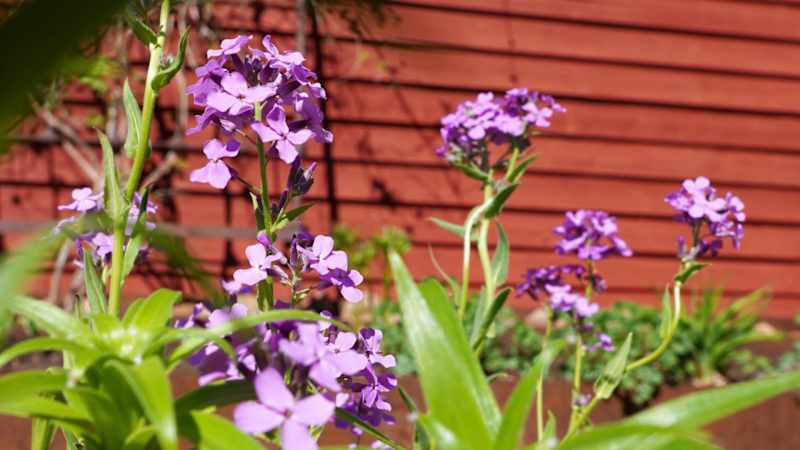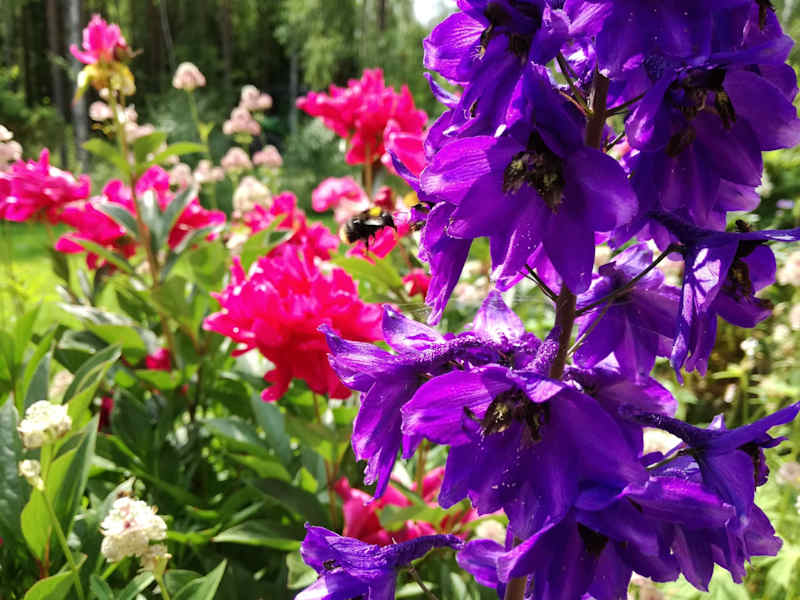Grandma’s flower bed was healthy, lush and colourful – take a leaf out of her book and make your perennials flourish

The older varieties are adapted to our conditions and require less care and water.
Most people want an easy-to-maintain, beautiful and lush perennial bed. The range of plants available in garden centres is growing and new varieties are constantly being developed. It’s easy to get over-excited in the nursery trade. You lose your sense of judgement and carry home a bunch of perennials that don’t do as well where you thought they would.
In the worst case, the new flowerbed will be neither easy to maintain, beautiful nor lush, and the seedlings will be so weak that nature’s own favourites will take over.
If you’re lucky enough to have the chance to revamp an existing flower bed, you’ll quickly see what kind of perennials thrive in it. Then it’s easier to replenish it. For a completely new flowerbed, you need to take into account the hours of sunlight, the location and the soil.
Grandma’s flower bed shines in all colours
Grandma’s flowerbed may bring to mind a romantic overflowing flower with the walls of the house. Before time, the soil was insulated as insulation against the foundations and flowers were planted in it. The plants were distributed with friends and acquaintances.
It was not about any minimalist flower beds that were of the same shade. On the contrary, they had more is more, the color joy of many floors offered pollinators a large table.
Durable, healthy and lush seedlings bloom for a long time. Often they can last for decades without anyone taking care of them.
It is important that we take care of old -fashioned perennials. It promotes biological diversity, as flowering often lasts long and pollen is more abundant than many processed plants.

Old-fashioned plants are resistant
Traditional old -time perennials have been developed over a long period of time and have adapted to our environmental conditions, which are often more resistant to diseases and pests. They require less care and pest control, which in turn is good for a sustainable garden.
Breeded perennials, that is, plants that are processed for a particular feature (color, shape, flowering time or resistance), are often more sensitive and require more treatment. Nowadays we have a very wide selection of plants and varieties and the opportunity to create very diverse and spectacular plantings. But if you choose more sensitive plants, it is also important to consider their individual needs to ensure beautiful and lush planting.
The right plant in the right place saves work time, but also water. Drying perennials at dry habitats save many liters of irrigation water.
Design your flowerbed before you go shopping. Ask for help in the store to ensure that you get the right plant in the right place and collect rainwater for watering.

Achilea Parmica
Delphinium SP – Jaloritaritannus
Doronicum Orientale – Spring Rock
Hemerocallis – daylilies
Hesperis Matronalis – a ranch

Lamprocapnos spectabilis – shattery
Leucanthemum vulgare – a daisy
Lilium Lancifolium – Tiger Lily
Lonicera Caprifolium – Fragrance Spring
Lythrum Salicria – Beach Flower
Paeonia – peony
Poleemonium Caeruleum
Rudbeck in Lancinata – Gold Ball
Saponaria Officinis – Robby Hyrth
Silene Calcheedonica – Fleet
Stachys Macharanta – Jalopäkämö
Some flowers are two years old, but seed well, and so they may appear a little where it hurts in the garden. These include Akileija, Ring Flower, Malva, Brush and Rose Rose.

